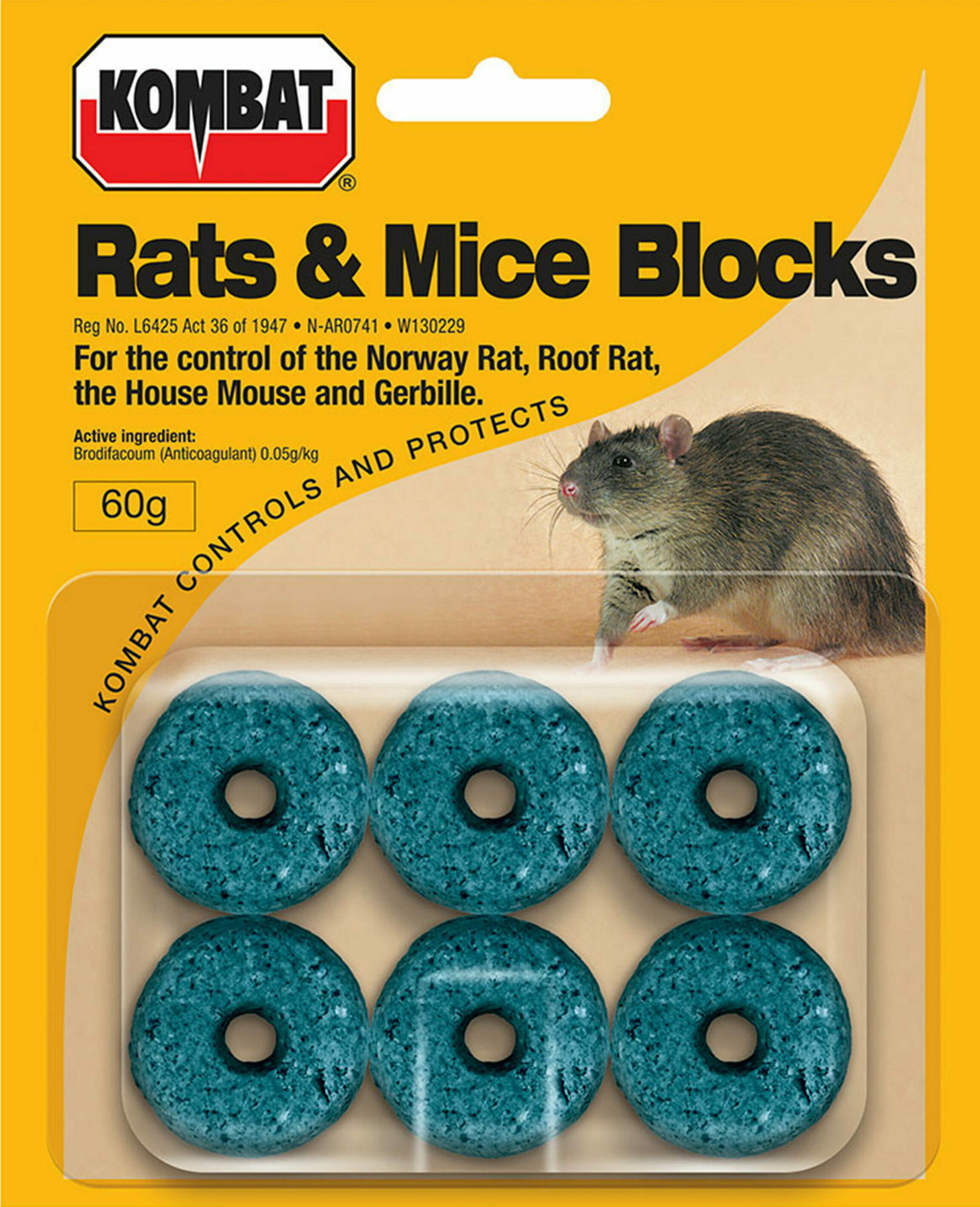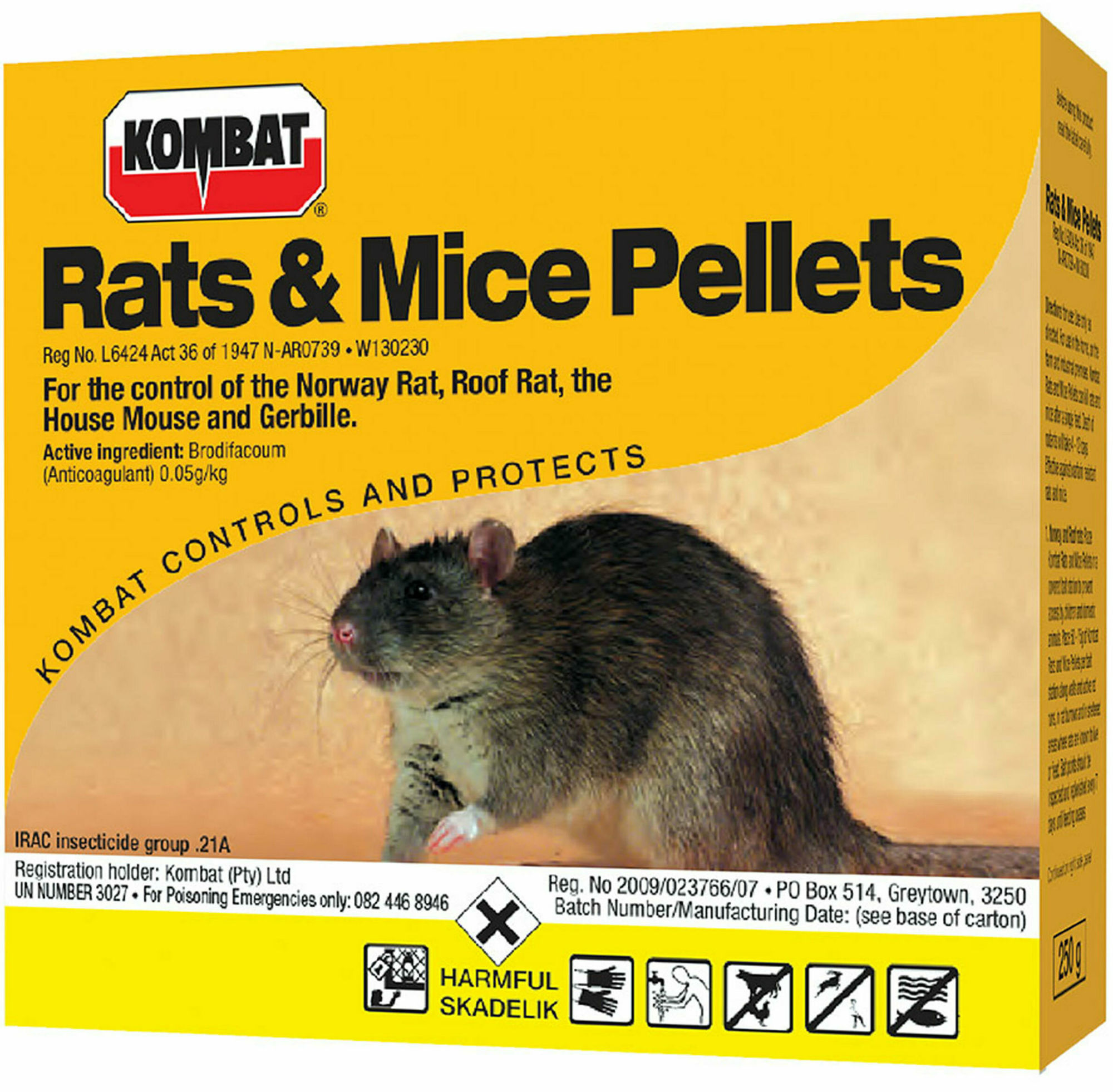Keep rodents under control
BEWARE, THE RAT!
The Covid-19 pandemic is nothing compared to what rodents did to humankind in the Middle Ages. Millions of people died of the plague caused by the Yersinia pestis bacterium that is carried by their vector, the flea, and be reminded the rat is the flea’s free ride. During the Middle ages and even up to the late 1800s, sanitation in Europe was very poor with open sewers and refuse littering neighborhoods, thus creating a perfect haven for rats. Rate were probably more numerous than people and spread their disease carrying fleas to the human population with dire consequences to people.
The current situation in South Africa is similar in some areas like informal settlements where the clamoring of people living in squalor and very unhygienic conditions. It is something that scare one when you consider the consequences. A nocturnal scouting in such informal settlements leaves one shivering with fear for the rats are running around like devilish legions of doom. But lest we forget the voracity of rats, let us look around ourselves. There is not a single place in south Africa without rats; they are in all neighborhoods, in shopping malls, on farms and even in game reserves, capitalizing on the shelter and food provided by human habitation.
SENSIBLE CONTROL
There are some who are against the use of rodenticides due their toxicity and potential secondary poisoning of owls and mammalian predators. Yes, most anti-coagulants do pose a risk of secondary poisoning, but let us consider the control options for rodents and make sense out of a threat far bigger than Covid-19 namely bubonic and pneumonic plague that are triggered by pandemic rat populations.
MECHANICAL TRAPPING
Everyone knows the faithful mousetrap that still works well inside the house to trap Mr Mouse. Mice are far less vigilant about threats than rats hence a mouse trap for a few mice is still a good option, but rats are very suspicious and cautious creatures. If they were not, they would not have survived and progressed so well onto all continents and islands of the world. A single pestering rat can still probably be trapped and killed with a large snap trap, but with the pandemic population of rats we experience in South Africa, snap traps are not going to make a dent even if we issue each South African with a free rat snap trap. Snap traps hardly deliver a “single shot kill” on a rat and while passing on to the nether world, the animal emits its last ode of foreboding to its mates with ultrasonic alarm sounds and chemical alarm pheromones. That is why rats in general are very “snap trap shy. Walk-in traps or funnel traps are efficient but only for a round or two basically for the same reason as for snap traps. When captured the rats emit the sound and pheromone alarm signals and other rats avoid the traps like the plague (pardon the pun!). A very clever person can probably trap and kill a few hundred rats with a walk-in trap, but it will also not make a dent in the pandemic South African rat population. For a homeowner or farmer with rats in a store the rat snap traps, and walk-in traps will work well if the population is only a few families strong. A visit to downtown Johannesburg will easily convince even the most skeptical amongst us that trapping is not going to bring the Joburg rats under control.
RODENTICIDES: GOOD OR BAD?
Rodenticides are globally considered to be very effective against rats and effective against mice. The challenge we face is that all rodenticides are very potent mammal toxins, meaning high toxicity to rats, mice, human beings, and pets like dogs. That should not even be a factor to consider because if, and it is a big IF, people use rodenticides as instructed by their labels in bait stations, the risk to anything else than rodents is minimal. The poisoning incidents of dogs and children with rodenticides are 100% due to the baits being placed out in the open and not hidden out of sight in strong bait stations. Rodenticides are not dangerous per se, it is people who act dangerously with rodenticides by ignoring instructions and warnings expressed on the labels. A box of rodenticide bait that is locked away in a safe place is less harmful than the flies that visit the Sunday lunch roast, but if Mom or Dad leaves the box on the kitchen table there is nothing less dangerous than when Johnny and his mutt discovers the unattended bait and tries to make a meal out of it.
A rodenticide bait that us securely placed in a proper bait station where Johnny and his Staffy cannot reach the bait station is a very safe way (it is the only safe way!) to apply a rodenticide.
Brodifacoum is the active ingredient of Kombat’s two rodenticide baits. It is a single feed anti-coagulant when means a single ingestion will kill the target animal. It is not an acute toxin and takes about three days to trigger serious symptoms in the target animal. The target animal continues feeding on the baits until the symptoms become serious. By day number four after the first meal of the bait, the target animal expires.
SECONDARY POISONING: HOW TO PREVENT IT
Although brodifacoum may cause secondary poisoning to dogs, cats that eat dead or dying rodents, it may largely be prevented by doing the following:
- Do an assessment of the rodent population to work out how much bait is required. Remember that the rodents only need one meal and they will be goners!
- Put out enough bait to serve each rat about 25 grams of bait and each mouse about 3 grams of bait.
- Place the total quantity of calculated bait out in different bait stations in the area where the rodents are active. It is very important for rats because dominant rats keep others away from food and therefore not all the rats will ingest deadly dosages of the baits if only one bait station is used. Using three or four bait stations increase the possibility that all the rodents eat their fair share of the baits in one meal.
- On the third and fourth days after baiting, check indoors and outdoors and collect all dead and dying rodents and dispose of them in them in sealed bags in the refuse bin.
This means that the rodents will not ingest excess bait that will make them “toxic dumps” that can possibly poison an animal or owl.
Wait seven days and repeat the baiting. This should wipe the population out completely.
Solid dog foods contain high loads of Vitamin K that is an antagonist for anti-coagulants, so if your dog eats those dry formulations, they will have a limited antagonistic barrier against the brodifacoum. Make sure the dogs are well fed during the baiting period so that their hunting and scavenging instincts do put them at risk of catching and eating dying rodents.
Should a dog become lethargic, check the mucous membranes and if they are pale the animal may be suffering from the effects of an anti-coagulant. Consult a veterinarian immediately for support and treatment because it may also be a disease like biliary.
WHICH BAIT: PELLETS OR BLOCKS?
Simple rule is that rats love blocks and mice love pellets but both forms are effective against rats and mice. If you have dogs in the house the blocks are a safer option when tied down inside the bait box because the rodents will gnaw and not carry the bait outside the box. If there are no dogs, the pellets are a good choice because rodents eat it and take it to their nests where their young may also feed on the pellets. Whatever you decide to do, always follow the most important principle of using rodenticide bait station. Never scatter pellets freely anywhere; it is a recipe for disaster.


Product registration details
Kombat Rats and Mice Pellets L6424 (contains 0.05 g/kg brodifacoum) HARMFUL; Kombat Rats and Mice Blocks L6425 (contains 0.05 g/kg brodifacoum) HARMFUL. All products registered in favour of Kombat (Pty) Ltd, 39 Dr. Gordon Road, Greytown 3250. Telephone number +27-33-417-1906/7. Emergency number for pesticide exposure incidents and other emergencies +27-82-446-8946.